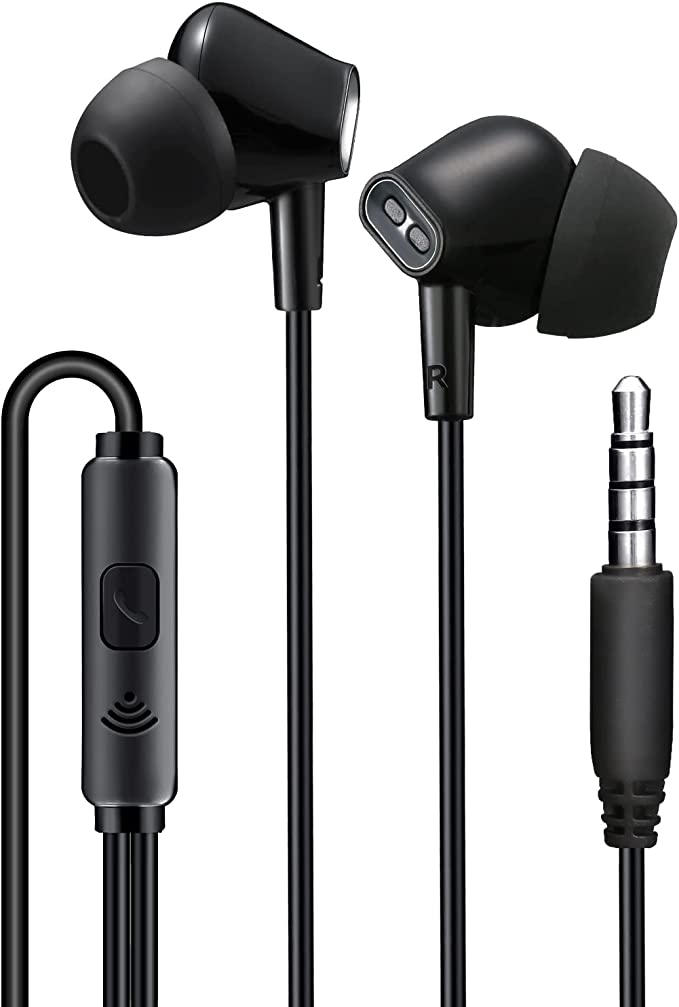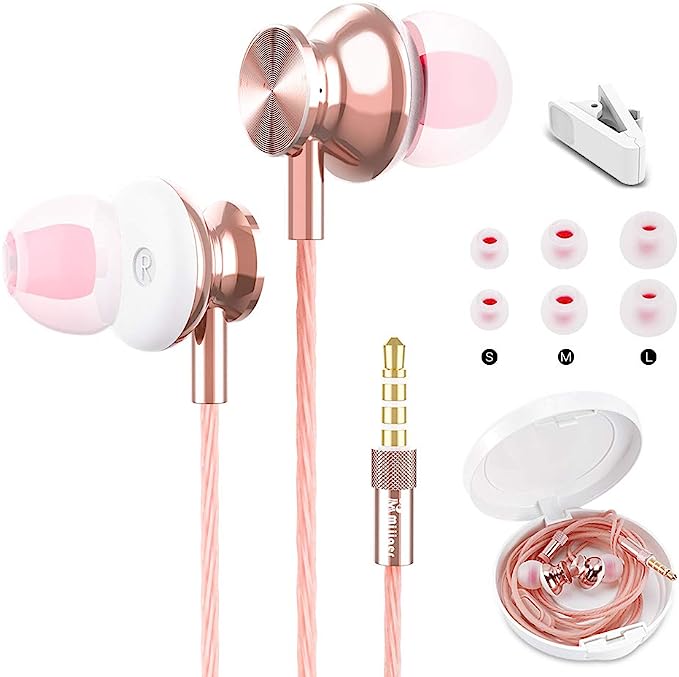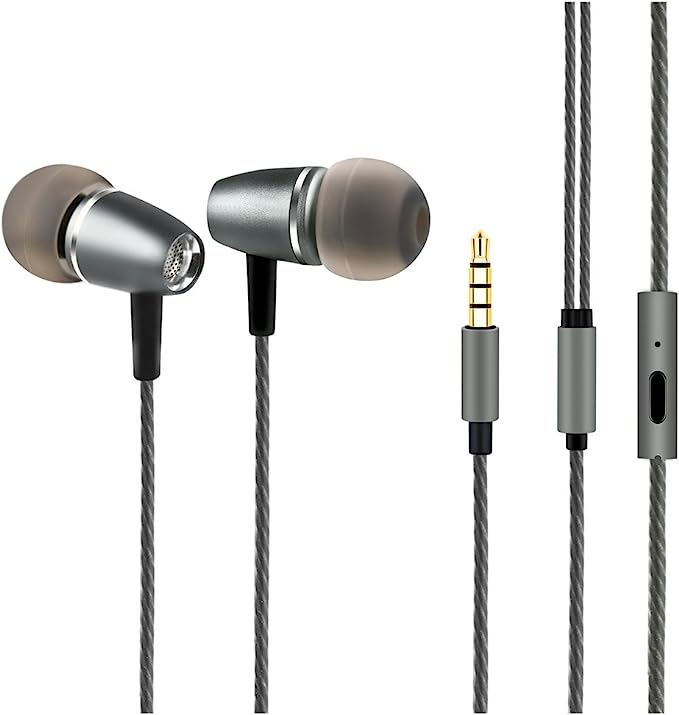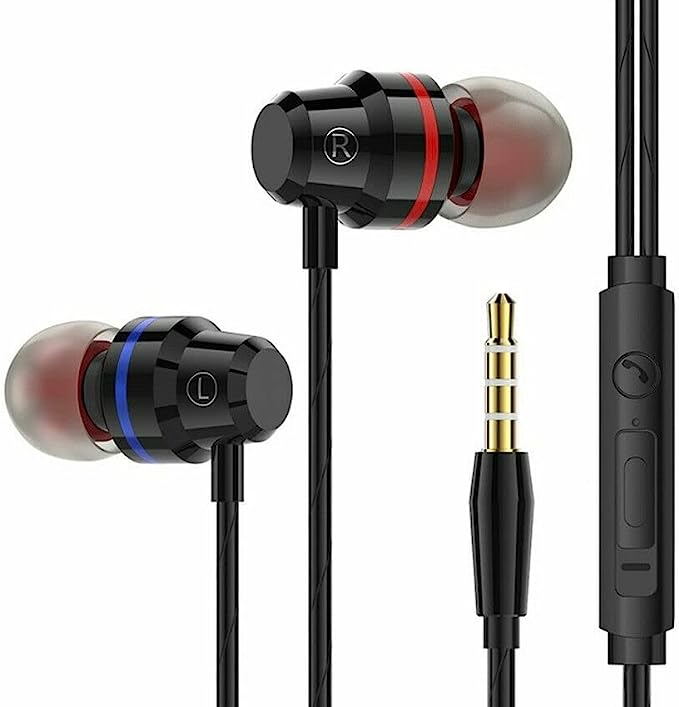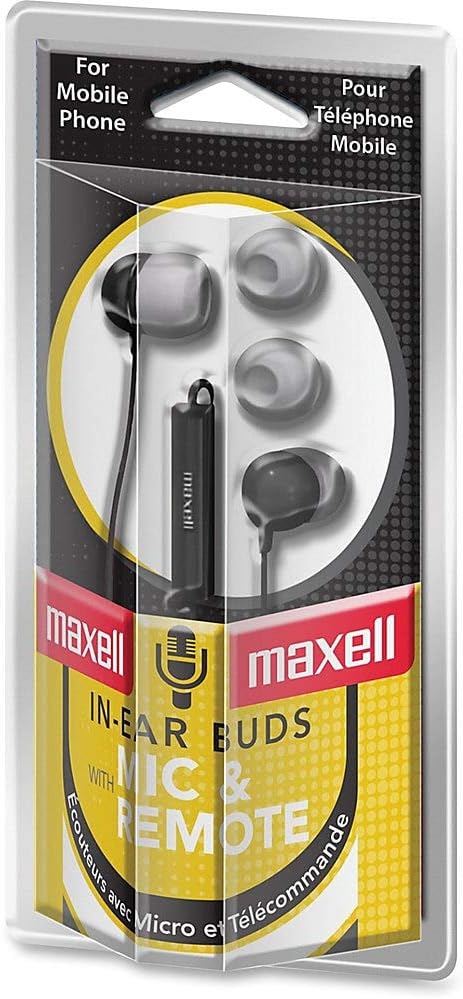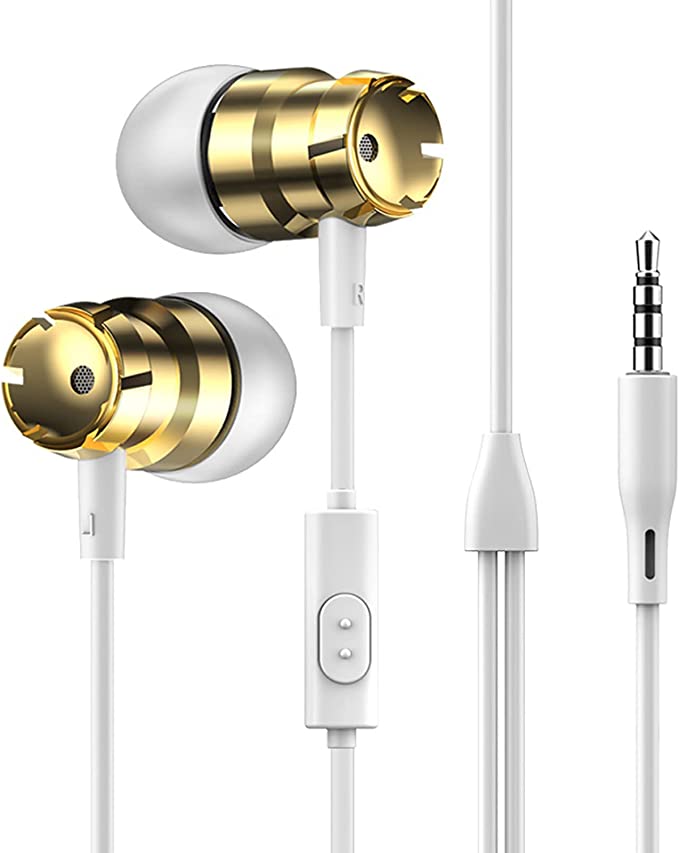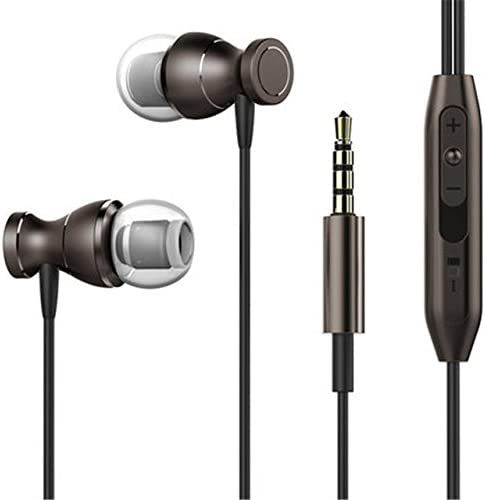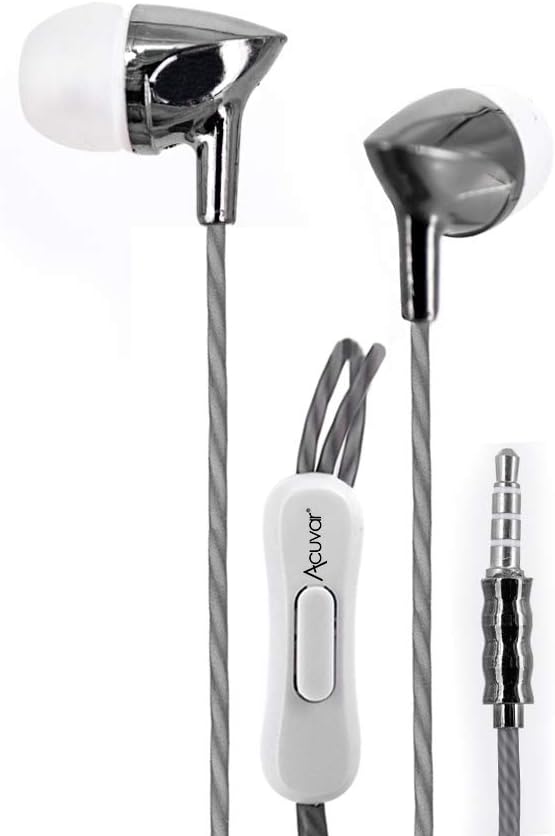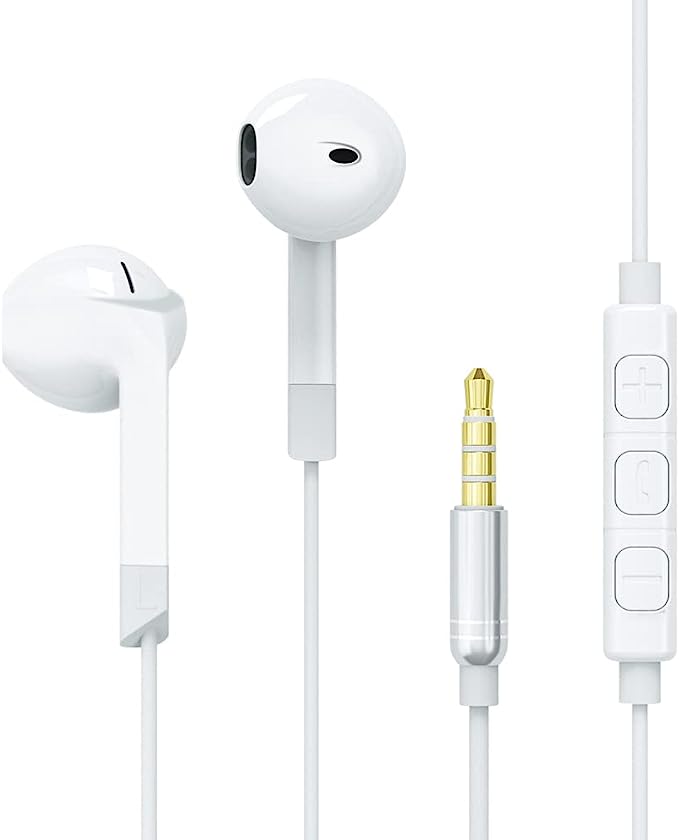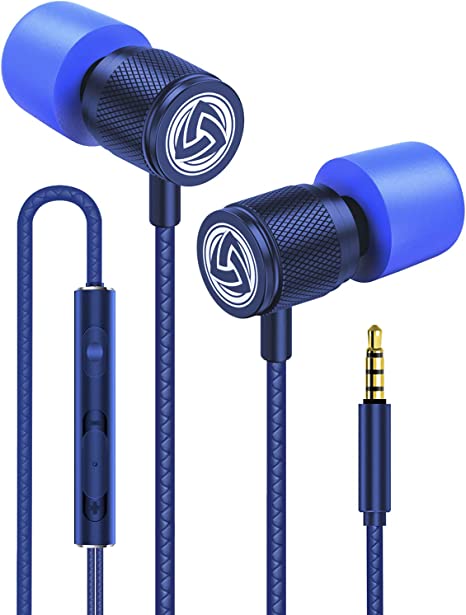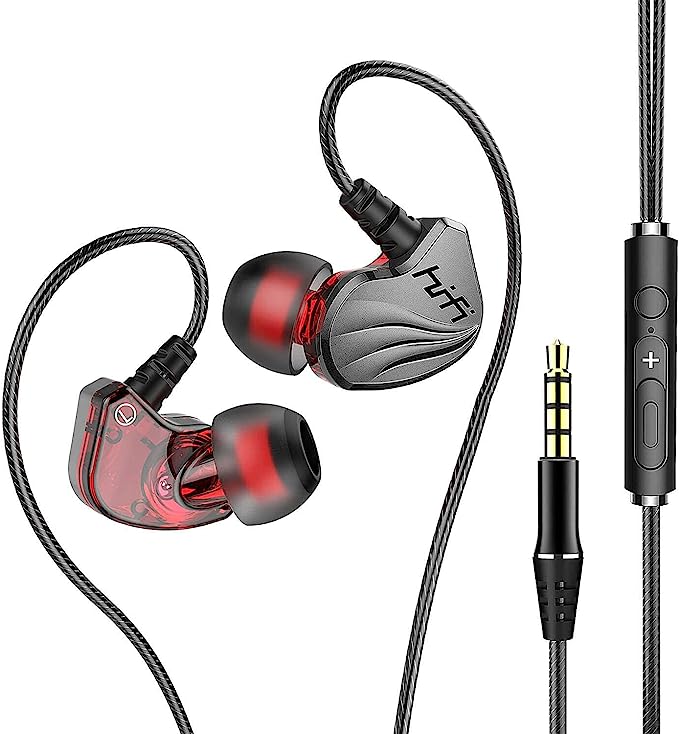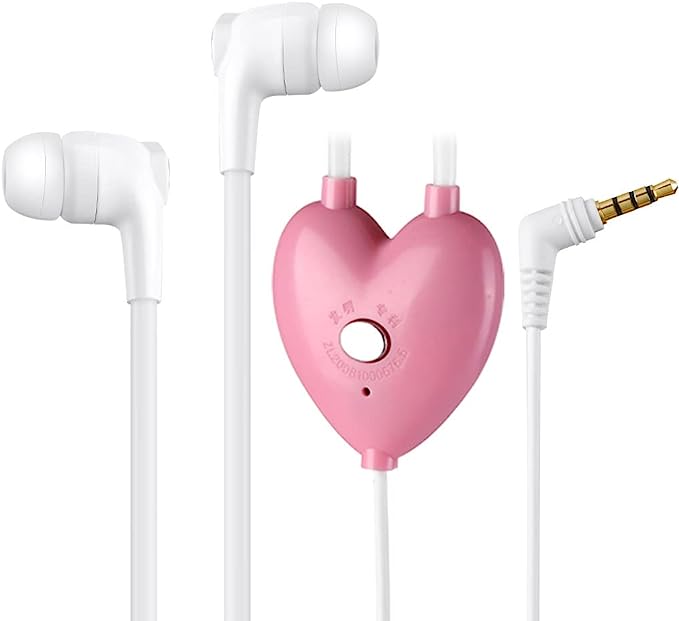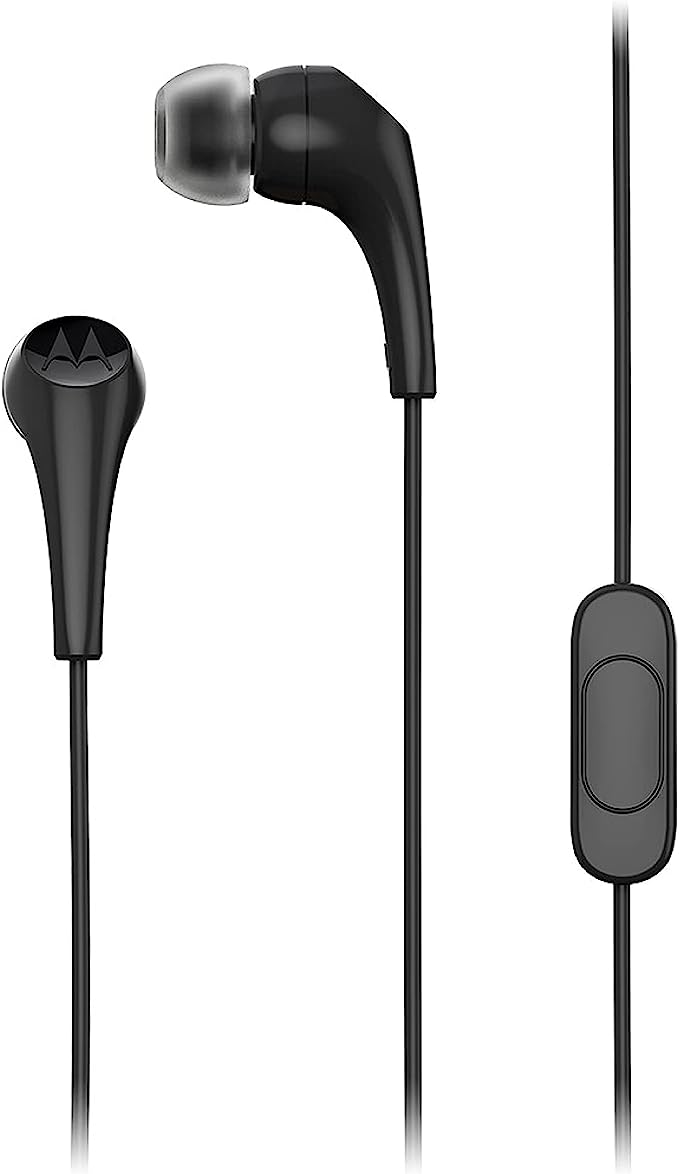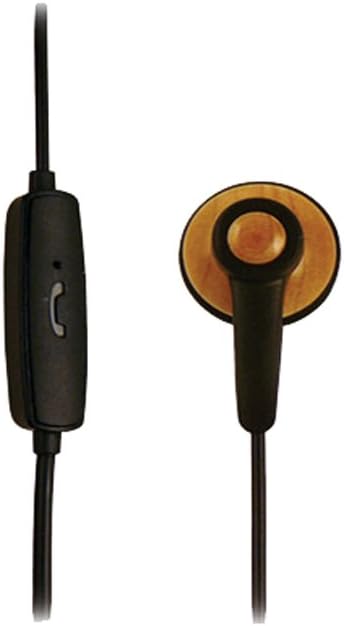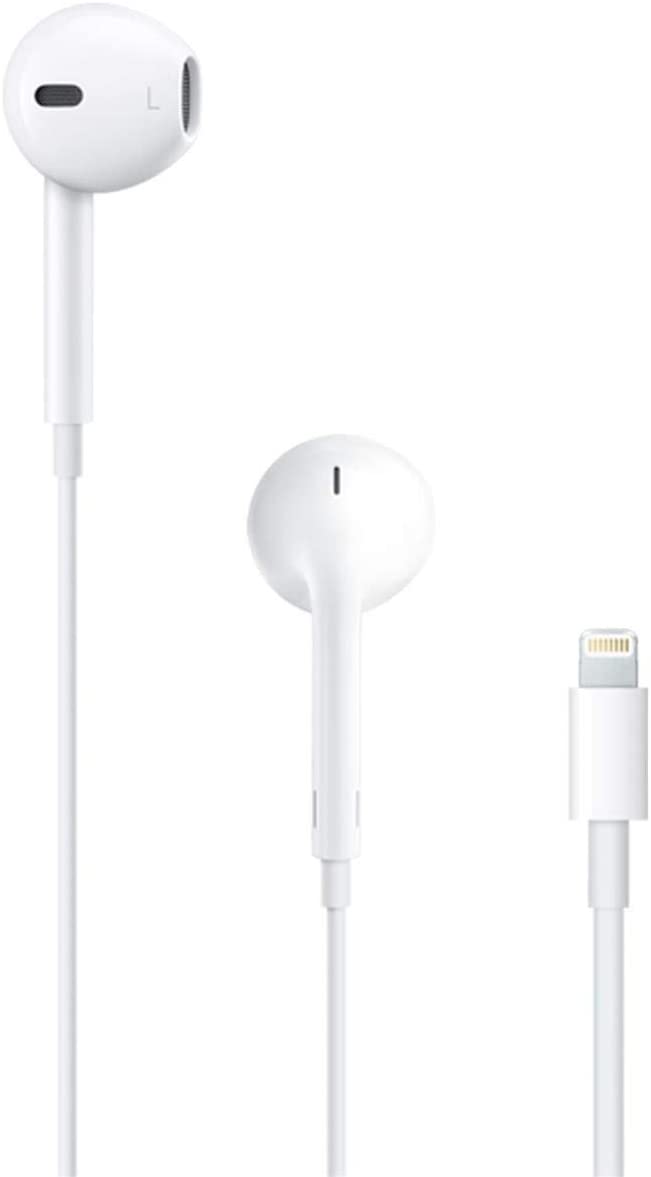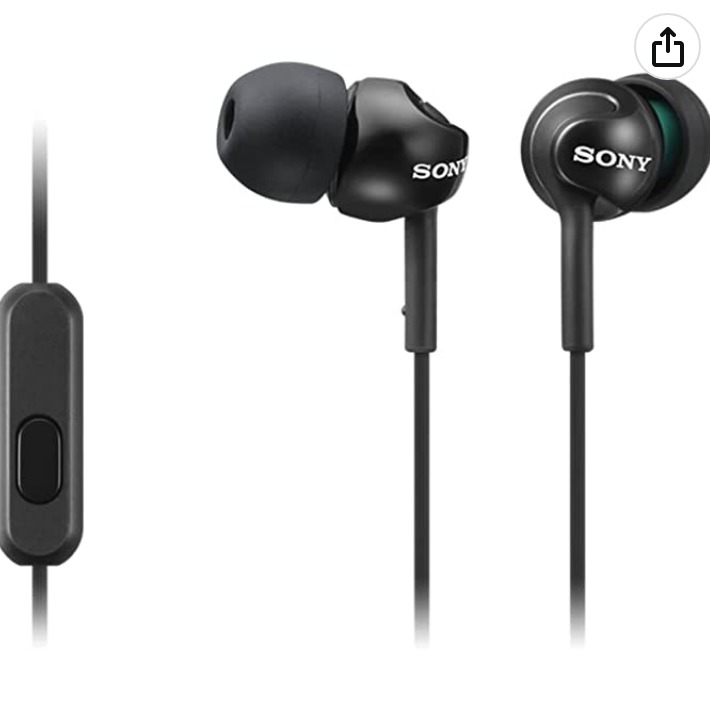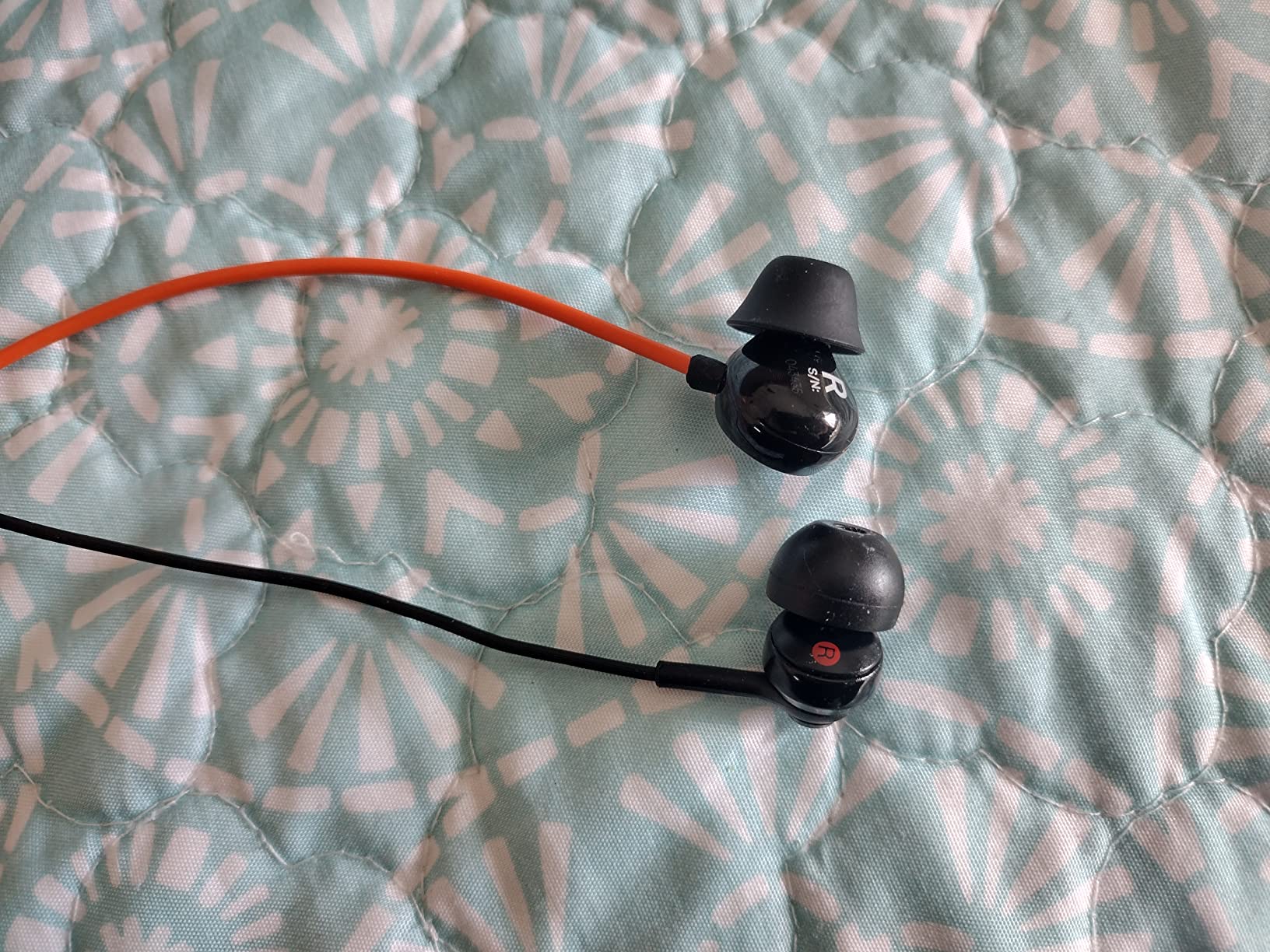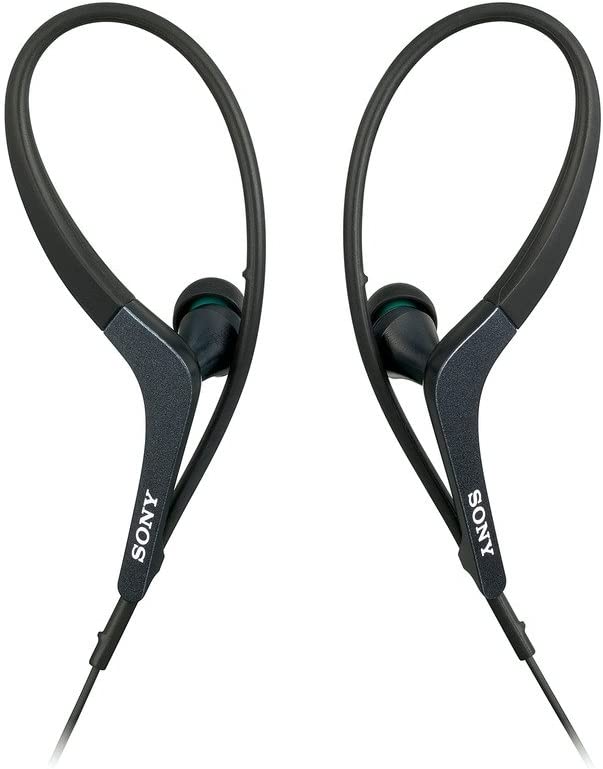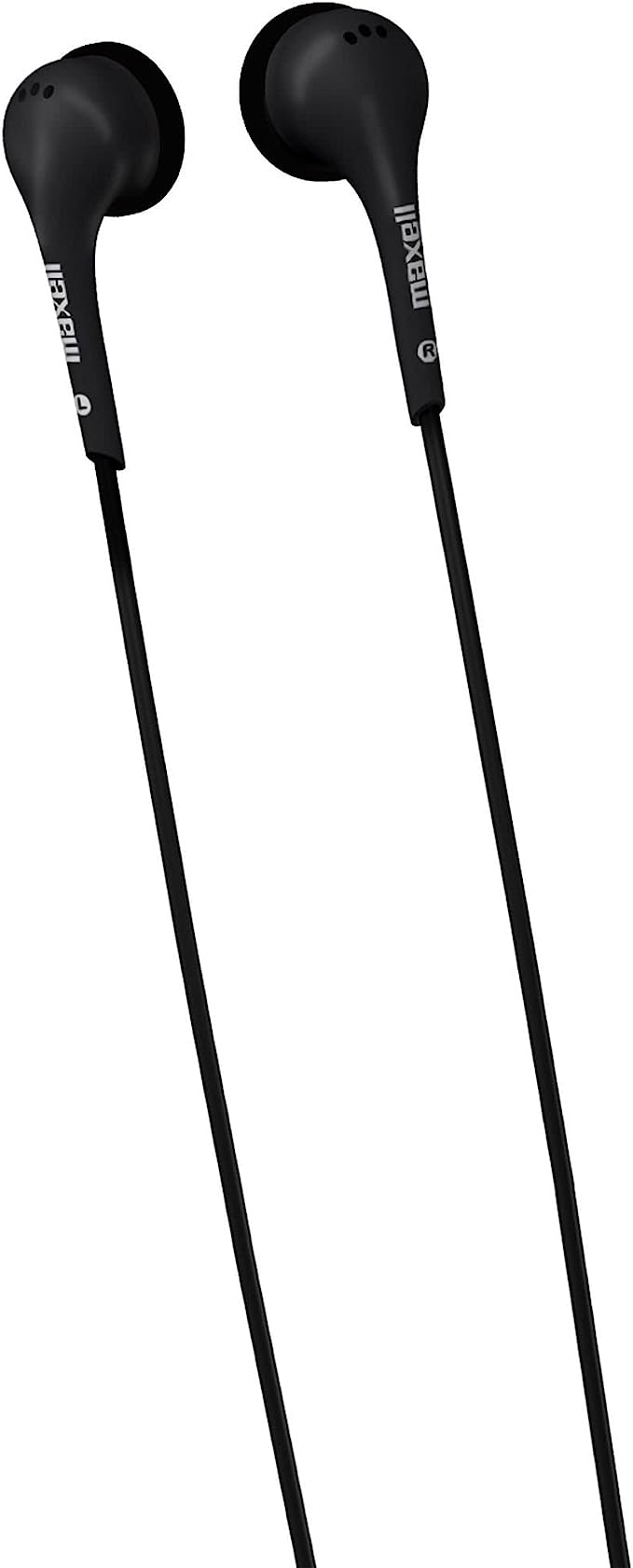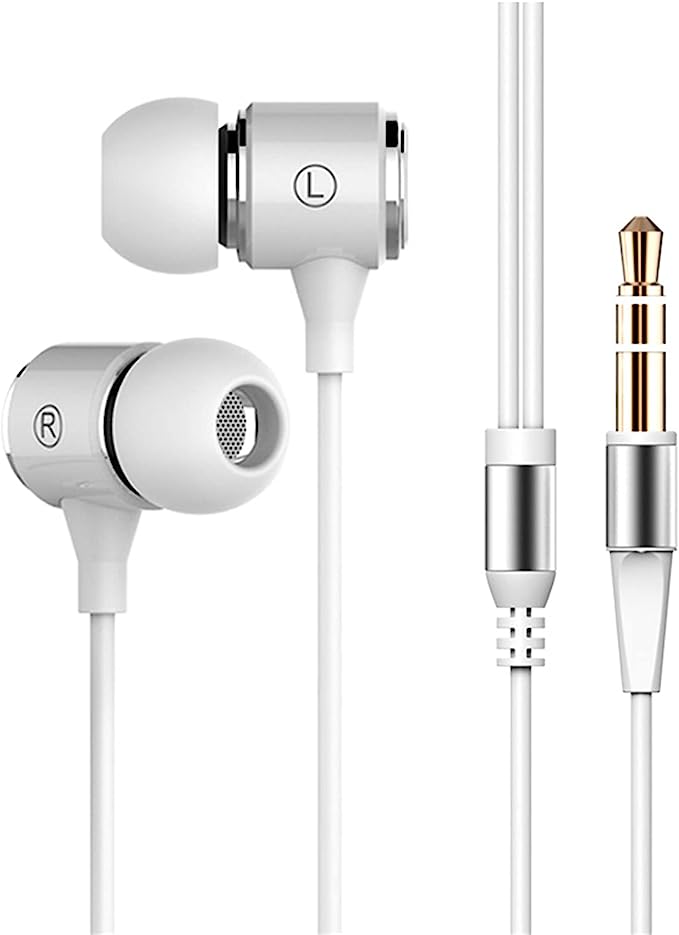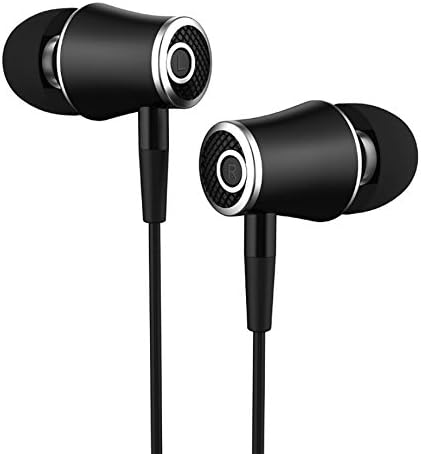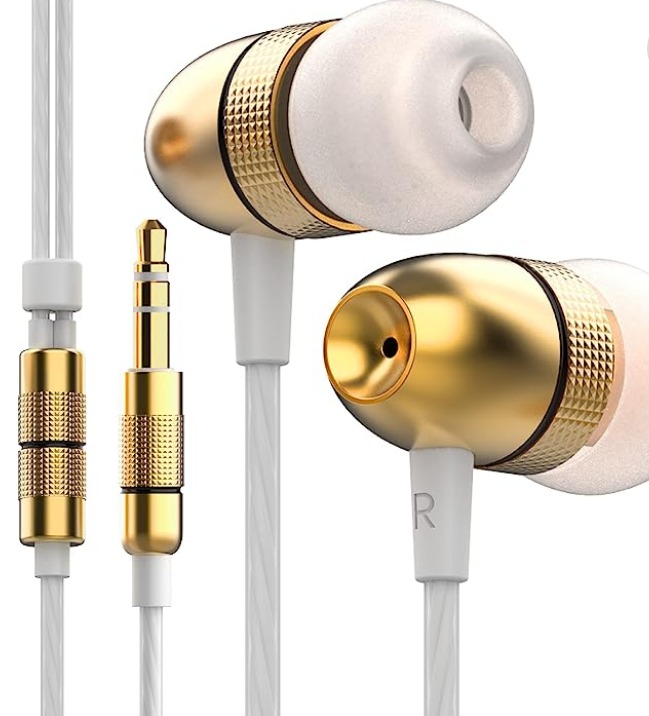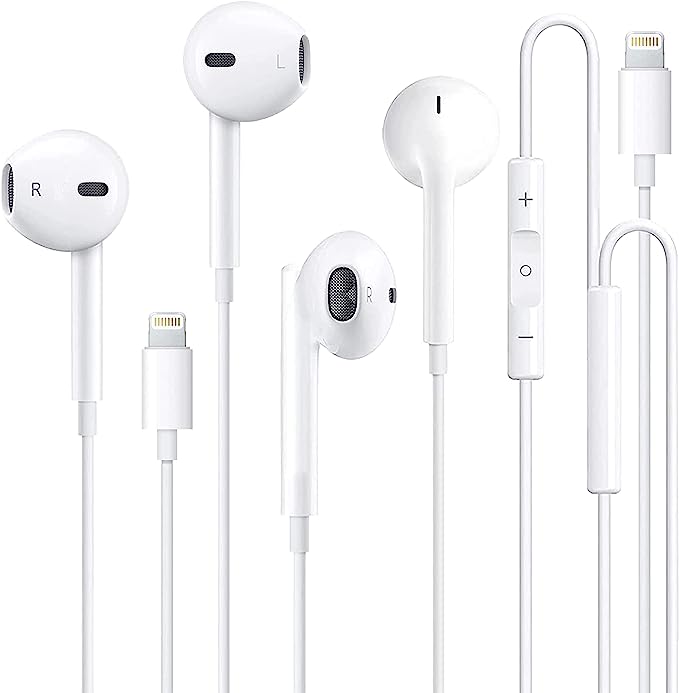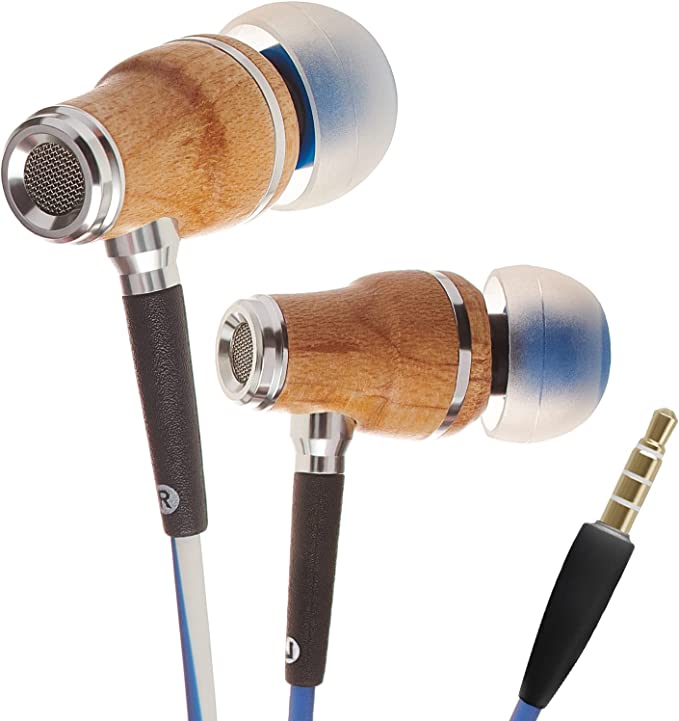XuanGui G20 Wired Earbuds: Immersive Sound for Gaming and Music
Update on March 21, 2025, 7:32 a.m.
We live in a world saturated with sound. From the gentle rustling of leaves to the roar of a jet engine, sound is an integral part of our daily experience. And for many of us, music and immersive audio experiences like gaming are essential to our enjoyment of life. But achieving truly good sound, especially through headphones, isn’t always easy. We’ve all experienced it: muddy bass that drowns out the details, tinny highs that make cymbals sound like shattering glass, or distracting outside noise that intrudes on our listening pleasure. The quest for perfect sound is a journey driven by both technology and a deep-seated human desire for sonic fidelity.

Sound: The Invisible Wave
Before we can understand how headphones work, we need to understand sound itself. At its core, sound is simply vibration. When an object vibrates, it creates pressure waves that travel through the air (or other mediums, like water or solids). These waves are characterized by their frequency and amplitude.
Frequency, measured in Hertz (Hz), determines the pitch of the sound. A low frequency corresponds to a low-pitched sound (like a bass drum), while a high frequency corresponds to a high-pitched sound (like a whistle). The human ear can typically hear frequencies ranging from 20 Hz to 20,000 Hz, although this range can vary with age and individual differences.
Amplitude, often measured in decibels (dB), determines the loudness of the sound. A larger amplitude means a louder sound, while a smaller amplitude means a softer sound.
How Headphones Work: Tiny Speakers, Big Sound
Headphones, including in-ear models like the XuanGui G20, are essentially miniature loudspeakers. They work by converting electrical signals into sound waves. This conversion process is carried out by a component called a transducer, or more commonly, a driver.
The most common type of driver in headphones is the dynamic driver. It consists of three main parts:
- Diaphragm: A thin, flexible membrane that vibrates to create sound waves.
- Voice Coil: A coil of wire attached to the diaphragm.
- Magnet: A stationary magnet that creates a magnetic field.
When an electrical audio signal flows through the voice coil, it creates a varying magnetic field. This field interacts with the stationary magnet’s field, causing the voice coil (and the attached diaphragm) to vibrate. These vibrations then create the sound waves that we hear.
Inside the XuanGui G20: A Closer Look
The XuanGui G20 wired earbuds are designed to address many of the common problems that plague lesser headphones. Let’s take a look at some of its key features and the science behind them. The G20 distinguishes itself with features designed to enhance both the listening experience and usability across various devices.
The Power of Neodymium
The G20 utilizes 10mm dynamic drivers with neodymium magnets. Neodymium is a rare-earth element that produces exceptionally strong magnetic fields for its size. This is crucial for headphone drivers because a stronger magnetic field allows for greater control over the diaphragm’s movement.
Think of it like this: Imagine trying to push a swing. A weak push (a weak magnetic field) will only move the swing a little. A strong push (a strong magnetic field) will move the swing much further. In a headphone driver, this translates to a more powerful and accurate reproduction of the audio signal, especially in the low-frequency range (bass). This is why the G20 is advertised as having enhanced bass response; the neodymium magnets allow the drivers to move more air, creating deeper, more impactful low-end frequencies. The specific diaphragm material, a Japanese PET, contributes to the sensitive, clear sound.
Taming the Noise: The Science of Isolation
One of the biggest challenges in headphone listening is dealing with external noise. Whether it’s the rumble of a bus, the chatter of colleagues, or the hum of an airplane engine, unwanted sounds can interfere with our enjoyment of music and gaming audio. The G20 tackles this problem with a focus on noise isolation.
Noise isolation, also known as passive noise cancellation, relies on physically blocking sound waves from reaching your ears. This is primarily achieved through the design of the earbud housing and the eartips. The G20’s in-ear design, combined with a snug fit from the memory foam or silicone eartips, creates a seal that prevents a significant amount of external noise from entering your ear canal.
The G20 takes noise isolation a step further with its “peak valley controller”. This is essentially a specialized filter within the earbud’s circuitry. While the exact technical details are proprietary, it’s described as filtering out both low-level noise (like the faint hiss sometimes present in mobile audio) and high-level noise (when connected to powerful sources like a PC). The “peak valley” terminology likely refers to its ability to attenuate both high-amplitude (peak) and low-amplitude (valley) noise components in the audio signal. The result is a cleaner, more focused listening experience, with less interference from unwanted sounds.
Wired vs. Wireless: A Clash of Convenience and Quality
In today’s world, wireless earbuds are incredibly popular, offering convenience and freedom from tangled cables. However, wired earbuds like the G20 still hold a significant advantage in certain areas, particularly for critical listening and gaming.
The primary advantage of wired earbuds is latency. Latency refers to the delay between when an audio signal is sent and when it’s actually heard. Wireless earbuds, which rely on Bluetooth or other wireless technologies, inherently have some degree of latency due to the encoding, transmission, and decoding of the audio signal. This delay might be imperceptible for casual music listening, but it can be a major problem for gaming, where split-second reactions are crucial. A noticeable audio delay can throw off your timing and ruin the immersive experience. Wired earbuds, on the other hand, have virtually zero latency because the audio signal travels directly through the wire.
Another advantage of wired connections is audio quality. While Bluetooth technology has improved significantly, it still involves compressing the audio signal, which can potentially lead to a loss of detail and fidelity. Wired connections can transmit the full, uncompressed audio signal, resulting in a potentially higher-quality listening experience, especially when using high-resolution audio sources.
The Importance of Fit: Comfort and Sound Quality
The fit of in-ear headphones is crucial for both comfort and sound quality. A poor fit can lead to discomfort, ear fatigue, and even pain, especially during extended listening sessions. It can also negatively impact the sound quality by allowing external noise to leak in and preventing the earbuds from delivering their full bass response.
The G20 addresses this with an ergonomic design and a selection of eartips. The shape of the earbud housing is designed to fit comfortably within the contours of the ear, while the memory foam and silicone eartips provide a customizable seal. Memory foam, in particular, is excellent for achieving a snug and comfortable fit because it conforms to the unique shape of your ear canal. This not only enhances comfort but also maximizes noise isolation, creating a better listening environment.
Beyond the Basics: A Deeper Dive into Audio Tech
Let’s delve into some of the more technical specifications of the G20 and explain their significance:
-
Impedance (16 ohms): Impedance is a measure of how much a component resists the flow of electrical current. Lower impedance headphones (like the G20) are generally easier to drive with lower-powered devices like smartphones and portable music players. A higher impedance headphone might require a dedicated headphone amplifier to reach its full potential. The 16-ohm impedance of the G20 makes it a good match for a wide range of devices, ensuring that you’ll get adequate volume and sound quality without needing extra equipment.
-
Sensitivity (118 dB): Sensitivity measures how loud a headphone will play for a given amount of power. A higher sensitivity rating means the headphone will be louder at the same power level. The 118 dB sensitivity of the G20 is relatively high, indicating that it can get quite loud without requiring a lot of power. This is beneficial for portable use, where battery life is a concern. However, it’s also important to be mindful of listening volume to protect your hearing.
-
Frequency Response (15Hz - 21000Hz): Frequency response describes the range of frequencies a headphone can reproduce. The G20’s range of 15Hz to 21000Hz covers the entire audible spectrum for most humans (and even slightly beyond). This wide frequency response suggests that the G20 is capable of reproducing both deep bass and clear, detailed highs. However, it’s important to note that a flat frequency response (meaning the headphone reproduces all frequencies at the same level) isn’t always the goal. Many headphones have a “tuned” frequency response, with certain frequencies emphasized to create a particular sound signature.
-
Double Shielding:The G20’s commitment to sound clarity extends beyond the internal components to the cable itself. Employing a “double shielding” design with an “isolated GND” structure, the cable is engineered to minimize interference and signal degradation.The first layer consists of a tightly woven net, providing physical protection and the initial barrier against electromagnetic interference. The second layer utilizes Korean TPEE (Thermoplastic Polyester Elastomer), a material known for its low impedance and minimal signal attenuation.
A Brief History of In-Ear Headphones
The concept of portable listening devices dates back further than many realize. Early versions of headphones, primarily used for telephone and radio communication, were bulky and far from comfortable. The development of smaller drivers and improved materials paved the way for the first in-ear headphones, which offered a more discreet and portable listening experience. The initial models were basic, often lacking in sound quality and comfort.
The real revolution came with advancements in materials science and miniaturization. The introduction of dynamic drivers with neodymium magnets, like those found in the G20, allowed for powerful sound reproduction in a compact form factor. The development of silicone and memory foam eartips significantly improved comfort and noise isolation, making in-ear headphones a viable option for extended listening.
Choosing Your Sound: Considerations
Selecting the right headphones depends on your individual needs and preferences. Here are a few key factors to consider:
- Intended Use: Are you primarily using the headphones for gaming, music listening, commuting, or working out? Different headphones are optimized for different purposes. Gaming headphones often prioritize low latency and accurate sound positioning, while music headphones might focus on a balanced frequency response or enhanced bass.
- Sound Signature Preference: Do you prefer a bass-heavy sound, a neutral sound, or a brighter sound with emphasized highs?
- Comfort and Fit: If you plan on wearing headphones for extended periods, comfort is crucial. Consider the shape of the earbuds and the type of eartips provided.
- Wired vs. Wireless: As discussed earlier, wired headphones offer lower latency and potentially higher sound quality, while wireless headphones offer greater convenience.
- Budget: Headphones range in price from budget-friendly to high-end audiophile models. Determine how much you’re willing to spend.
Protect Your Hearing
While enjoying high-quality audio is a wonderful experience, it’s crucial to protect your hearing. Prolonged exposure to loud sounds can cause permanent hearing damage. Here are some tips:
- Follow the 60/60 rule: Limit listening to 60% of the maximum volume for no more than 60 minutes at a time.
- Use noise-isolating or noise-canceling headphones: These reduce the need to crank up the volume to overcome external noise.
- Take breaks: Give your ears regular breaks from listening.
- Be mindful of your environment: Avoid using headphones in excessively loud environments.
- Consider using a sound level meter app: These apps can help you monitor the loudness of your listening environment.
- Get regular hearing checkups: If you’re concerned about your hearing, consult an audiologist.
The XuanGui G20, with its focus on clear sound, powerful bass, and effective noise isolation, offers a compelling option for those seeking an immersive audio experience. By understanding the science behind its design and features, you can appreciate the engineering that goes into creating high-quality sound and make informed decisions about your audio gear. Remember, the best headphones are those that best suit your individual needs and listening preferences.
